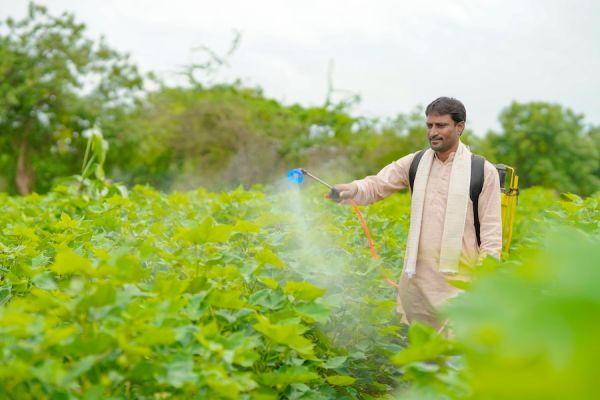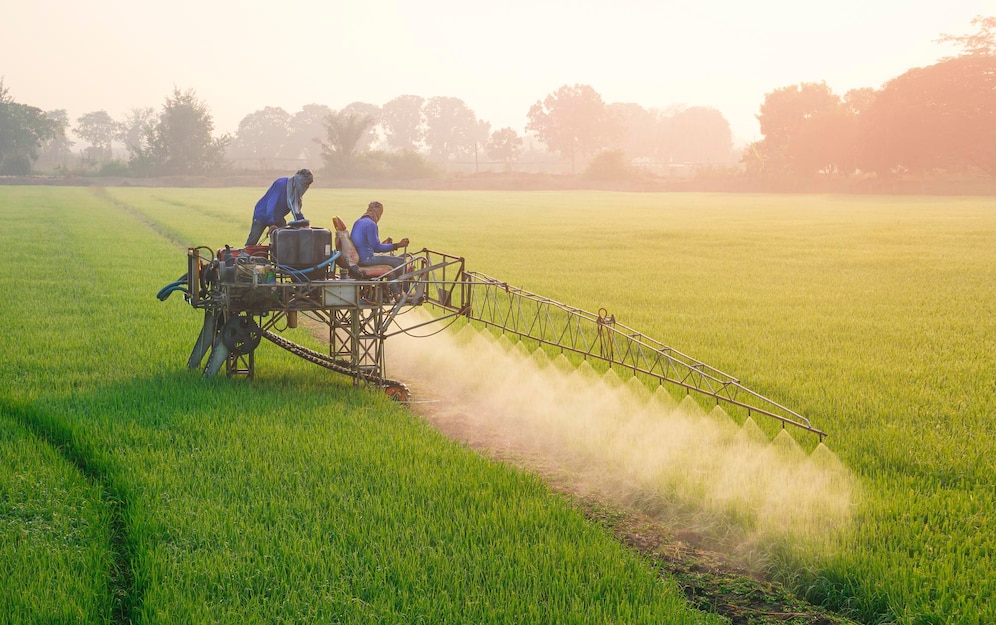Quick Tips on Insecticides: Essential Knowledge for Farmers

Insecticides are pivotal in ultramodern agriculture, assisting growers to cover their crops from adverse pests and assuring well-conditioned yields. Still, deciding the basics of insecticides is critical for efficient and safe use on estates. In this complete companion, we will give quick tips and essential knowledge for growers to pilot the folks of insecticides confidently.
Understanding Insecticides
Insecticides are chemical essences to hold, repel, or kill insects that threaten crops. They approach in varied forms, involving sprays, dust, grains, and baits, each acclimatized to target distinct pests or applied through other forms. It's dynamic for growers to opt for the exact class of insecticide based on their crops, the targeted pests, and environmental factors.
Classes of Insecticides
Several types of germicides are graded based on their chemical composition and mode of action. Considerably, they trip into classes similar to organophosphates, carbamates, pyrethroids, neonicotinoids, and natural insecticides. Each type has its properties, effectiveness, and implicit dangers. Farmers should be friendly with these classifications to elect the most capable insecticide for their agriculture trials.
Organophosphates are non-natural chemicals that break up the nervous network of insects by containing the exertion of acetylcholinesterase, an enzyme pivotal for nerve function. This causes acetylcholine collection, leading to overstimulation of nerve cells and eventual palsy of the insect. They're generally applied in farming to check various pests on crops like fruits, vegetables, and grains.
Pyrethroids, gathered from natural composites set up in chrysanthemum flowers, target the nervous system of insects, dismembering nerve function and causing paralysis. Understood for their rapid-fire knockdown effect and low mammalian toxin, they're large picks for ménage insecticides as easy as farming pest control. However, repeated usage can lead to insect opposition.
Neonicotinoids, systemic insecticides, do on nicotinic acetylcholine receptors in the nonentity nervous system, breaking nerve transmission and causing palsy and death. Extensively applied in farming for their effectiveness against a wide range of pests and systemic nature, they've approached under check for implicit negative impacts on non-target organisms similar to bees and different pollinators.
Insect Growth Regulators( IGRs) intrude with the growth and development of insects by acting or containing insect hormones. Dismembering processes are similar to moulting, transformation, and reduplication and are implemented in integrated pest operation( IPM) programs to target distinct life platforms of insects while minimizing detrimental effects on beneficial organisms and the climate.
Biological insecticides made from living organisms similar to bacteria, fungi, or plants extend the picky targeting of pests with minimum impact on non-target organisms and the climate. Cases carry Bacillus thuringiensis( Bt) and Beauveria bassiana, precious tools in maintainable pest operation trials.
Botanical insecticides, deduced from plant excerpts or integral oils comprehended for their insecticidal properties, work by breaking insect nervous systems, repelling pests, or interfering with their feeding and growth. Obliged to organic agriculture and gardening practices, they have a low environmental impact due to their natural origins.
Application Techniques
Correctly applying insecticides is pivotal for maximizing cogency while minimizing environmental impact and implicit detriment to non-target organisms. Growers can refer insecticides through foliar spraying, soil drenching, seed treatments, or case injections, turning on the targeted pests and crops. It's critical to succeed in marker instructions precisely, utilize applicable defensive gear, and stick to consigned dose grades to ensure secure and practical application.
Integrated Pest Management( IPM)
Integrated Pest Management is a holistic route that combines varied pest controller programs containing natural, cultural, automatic, and chemical forms. While insecticides are precious devices in pest operation, they should be co-opted into a comprehensive IPM plan emphasizing maintainable and environmentally particular trials. By integrating insecticides judiciously and in confluence with diverse controller means, farmers can degrade dependence on chemicals and advance long-term pest control results.

Safety Cautions
Farmers must prioritize protection when managing and applying insecticides to safeguard themselves, farm workers, consumers, and the climate. This includes wearing applicable particular protective equipment( PPE), similar to gloves, goggles, and respirators, during mixing, scattering, and gain conditioning. Also, growers should securely keep insecticides from children, pets, food, and water sources and deposit empty holders and unused products according to original regulations.
Environmental Considerations
Insecticide applications can have casual consequences on non-target organisms, containing beneficial insects, wildlife, and water origins. To minimize environmental impact, growers should exercise perfect operation, evade scattering during windy ifs or near water bodies, and borrow means to save natural predators and pollinators. Likewise, opting for insecticides with less toxin to non-target organisms and delving indispensable pest regulator styles can kick into maintainable farming trials.
Likewise, the growth of insecticide resistance in pest populations is a rising interest with environmental implications. Overuse or abuse of insecticides can quicken the development of opposition, giving up insecticides less productive over the moment and directing to increased reliance on more full or environmentally dangerous chemicals. This threatens the effectiveness of pest operation exertions and similarly exacerbates environmental impacts by raising the usage of potentially further poisonous natures.
Integrated pest operation( IPM) approaches prioritizing natural, artistic, and automatic regulator forms alongside discreet play of insecticides can help alleviate these environmental pitfalls. By degrading dependence on chemical insecticides and raising trials that enrich ecosystem adaptability and natural pest controller mechanisms, IPM also fosters maintainable farming systems. Also, embracing perfect operation ways, similar to targeted spraying and pest-specific formulations, can minimize off-target goods and break overall fungicide application.
Likewise, existing agroecological principles, like crop diversification, range preservation, and soil health operation, can improve ecosystem adaptability and boost the need for chemical intakes. Advocating agroecosystem heartiness through trials that raise biodiversity, soil fertility, and ecological balance contributes to lengthy-hitch sustainability and adaptability regarding environmental difficulties.
Generally, accounting for environmental impacts in the operation of insecticides requires a holistic way that integrates ecological principles, coherent scientific substantiation, and stakeholder collaboration. By prioritizing environmentally accountable pest operation practices and cultivating invention in maintainable farming, growers can cover ecosystem healthiness, safeguard biodiversity, and ensure the long-term viability of farming product networks.
Monitoring and Estimate
Frequent monitoring of pest populations and crop healthiness is integral for deciding the effectiveness of insecticide treatments and consequently conforming operation strategies. Growers should deride fields regularly, distinguish pest species and their harmful symptoms, and observe records of fungicide operations and their issues. By covering pest dynamics and assessing controller measures, growers can make justified opinions to optimize pest operation strategies and degrade reliance on insecticides.
Through monitoring, cultivators can discover primal signals of pest infestations and assess the necessary intervention, including the usage of insecticides. On a different aspect, evaluation entails evaluating the effectiveness of pest operation measures and assaying the impact of germicide treatments on pest populations, crop yields, and environmental factors. This systematic data collection and analysis enables growers to form justified opinions about pest control interventions, icing prompt and productive reactions to pest dangers while minimizing environmental risks.
Also, monitoring and estimating grease ongoing enhancement in pest operation trials nonstop, having growers upgrade their strategies grounded on feedback and optimizing resource allocation. Eventually, integrating monitoring and evaluation into pest operation protocols promotes maintainable farming by degrading reliance on chemical insecticides, mollifying environmental impacts, and enhancing general crop health and productivity.
Conclusion
In conclusion, the basics of insecticides are integral for growers to handle pest infestations and cover crop yields effectively. By succeeding with the quick tips handed, farmers can form informed opinions about opting for and applying insecticides while minimizing dangers to natural health, beneficial organisms, and the climate. With correct monitoring, appraisal, and integration of insecticides into holistic pest operation strategies, growers can optimize pest control works and ensure the long-term sustainability of farming products.If you want to buy insecticides online you can check our official website.
Posted
1 year ago
No comments yet! Why don't you be the first?











Add a comment